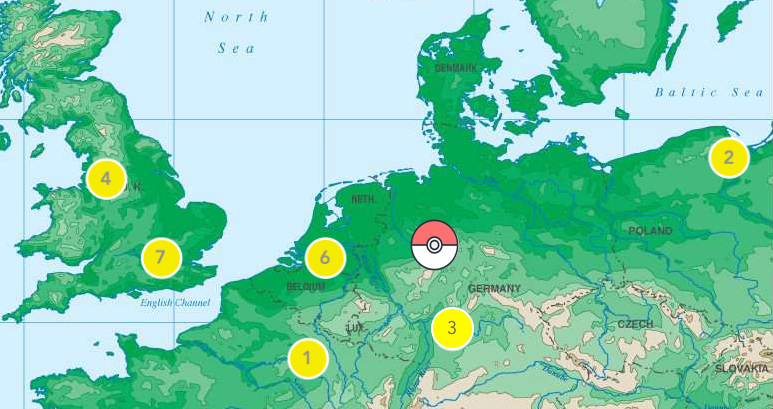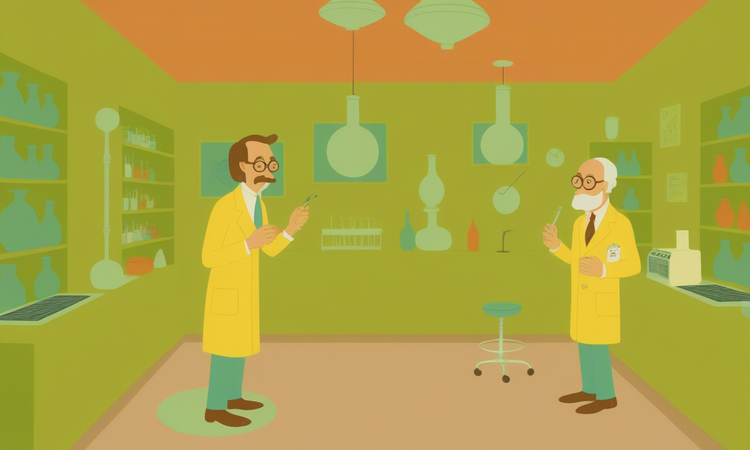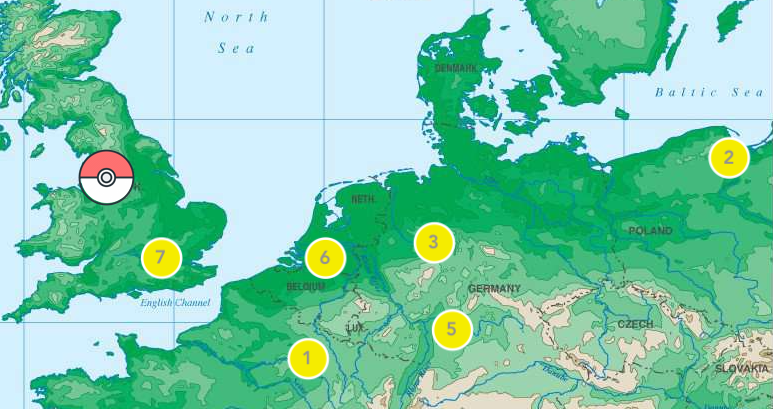Design Decisions in Smart Creative Leadership
I'm crawling out from under a month that has involved all of the following:
a full week of day trips around my adopted home country,
a house move,1
a trip to - and I swear I'm not making this up - the Pokemon World Championships in London2
It has been A LOT.

I did a coy thing in my last entry - when it came to describing the actual design of the course, I just said,
…in my experience, the hardest part is figuring out model for the repeatable mechanic and building the first one. After that, even as you deviate and experiment with that model, there's an existing form and logic to fall back on.
And I didn't actually say anything about that design in the first place. So for all the nerds out there, today I'm going to unpack 3 of the design decisions I made in the course that I'm quite fond of.
Decision 1: The front-loaded project & the resource buffet
Here's how it works: every week, the first thing you see as a participant in the course is the description of the new project you're going to work on with an overview of how it's going to be evaluated and some examples of a good final product. The entire course revolves around these projects, and they are the only part of the course that is mandatory to complete. So, in theory, you could read the project description, do the project & submit it and be done without ever touching any of the other resources. But if they don't want to do that, they also have a curated set of resources that I have found or created to help them level up.
This decision is a little bit of a gamble - I'm betting that what a participant can do (only the project) and what a participant will actually do are different, and I'm betting that the project itself is sufficiently challenging that they won't do this3.
I felt pretty confident in this gamble because it rests on 2 critical user insights:
- my participants are grown ass people who come into the course with a lot of experience and expertise. Frontloading the project allows them to self-assess right away what they already think they can do and what they don't think they can do. From the jump, they can start to figure out how much time and energy they need to put into the course to complete this project - and that may vary from person to person and project to project.
- this decision gives the participant greater autonomy over their experience. Instead of saying (as is common in a lot of online courses), "here's a bunch of mandatory hoops for you to jump through to keep going with occasional comprehension questions that will insult your intelligence," this says, "you know what you're doing - you know what you need. Use what is helpful for you based on your own knowledge and self-awareness."
I wouldn't do this all the time. I wouldn't do it in a mandatory course or if I was teaching primary schoolers who haven't developed rich meta-cognitive understanding4.
Design Decision 2: The Weekly Meditation
This one could absolutely be filed under "designing to solve your own problem" - but I've also heard from enough people to know I'm not alone. Here's the scenario, perhaps familiar to you: you sit down to do something that demands your focus, but you just can't drown out all of the noise from everything else you've been doing & everything else you have to do. It just takes a gargantuan amount of mental energy to get to that focused state, and by then you've maybe spent a half hour doing whatever you meant to focus on in a state of half-stupor.
Yeah, me too.
So every new project starts out with a brief guided audio meditation, all of which come from the different practices I use myself when I need to focus (though my most common go to is called, "read a book and let your mind wander until it comes back to the thing you want to focus on." It's great, but not always the most time-sensitive).
You can listen to an example of one of the meditations below.
Design Decision 3: The Activation Activity
We're almost never learning something that is entirely new and novel to us. I hear this discussed a lot in the context of adult learning as though it's not true of children as well, which I think is kind of BS. Alas, in this case we are talking about adults...and in the case of a course on leadership, we're talking about adults who tend to have some real skills and accomplishments under their belt.
All that is to say, I want to draw out their existing experiences and expertise and ask them to put it to work in a new way, but how to do that is the trick.
Play is a powerful accelerant for learning5...but I've found with adults you can't always call something play or else it gets immediately classified as trivial or non-serious. So in the course, we have a different activation activity every week. These activities are designed to disarm the participant by inviting them to do something a bit silly, a bit absurd, or just out of left field - but they're also designed to help participants tap into their own experiences and start to evaluate what they already know and what they are still trying to figure out. Combined with the front-loaded project & buffet, this helps participants figure out where to focus their energy for the week. Each activity is fun but also rigorous.
I also made a real misfire with this decision - I referenced it last time, but I chose to make these deliberately asynchronous...and a week into the course I realized that they'd be much more interesting to do with other people and also act as an intentional kickoff for each new project. I started running optional async sessions, and a few people would join every time...but most people just didn't have enough lead time to get it in their schedules. Lesson learned: in the next run, all four activation activities will be scheduled with synchronous sessions before the course even starts.
And, yes...I'm intentionally not telling you what the activities are. You'll have to sign up for the course.
A few links, perhaps?
Because I've got so many I want to share...
- File this one under imagining radical possibilities, on the need for a global government. This one makes the argument that such a thing should exist, but it leaves open the question of how such an undertaking should work in the first place. A very thorny systems design issue...
- How large would a bucket of water have to be to put out the sun? The answer may surprise you. This isn't even from Randall Munroe's upcoming release, What If 2 which I guarantee will occasion much laughter in the Trudeau household.
- If you want to go in depth on the design and evolution of a very complex object, let me recommend On Flight Decks.






